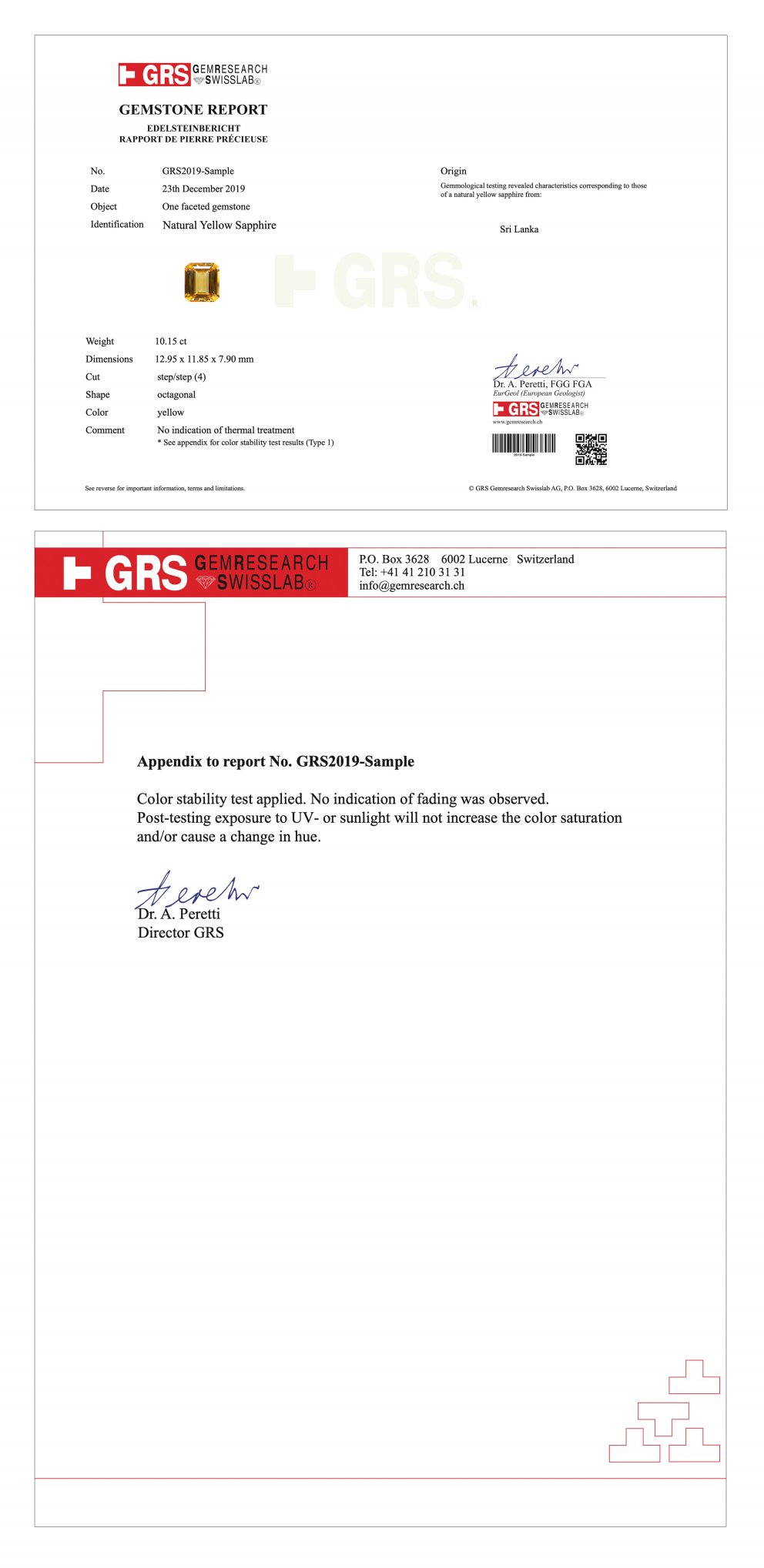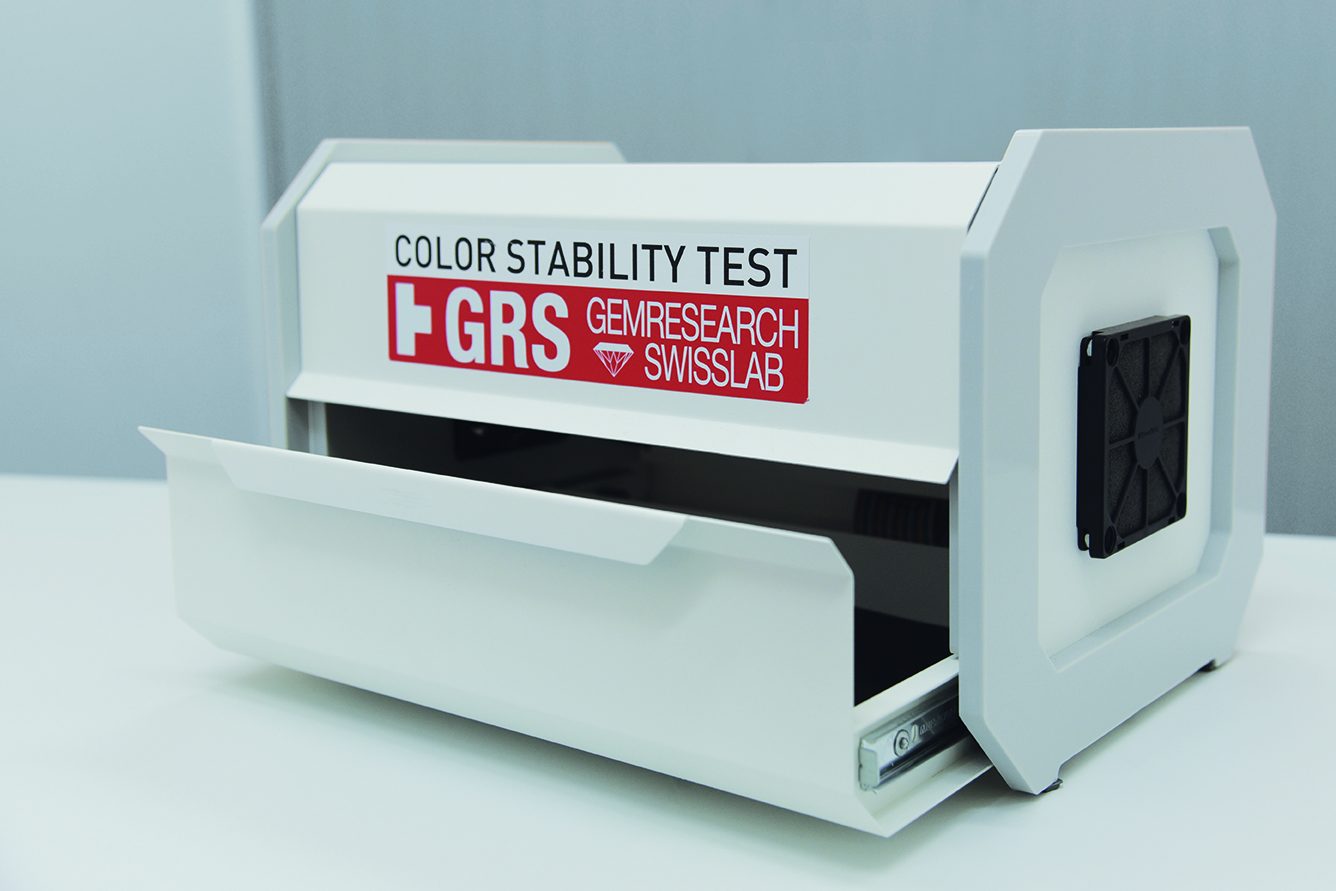Color stability test: Overview of "type" classifications
GRS Laboratories now offers color stability testing services at all laboratory locations
Color fading is a natural phenomenon observed in certain gemstones, particularly with orange to yellow sapphires. In most cases, this phenomenon is reversible and occurs when the sapphire is exposed to a certain type of light. The light sources emission energy will eventually induce a color-change, effectively reducing the yellow or orange component of that sapphire. For example, an orangy-pink Padparadscha sapphire can change to a pink sapphire color. The original color can often be reinstated after exposure to a particular light source such as long-wave UV-light.
GRS has established four categories in which we divide the tested gemstones. After color stability testing has been performed, the observed results will be reported as follows on the GRS Gemstone Report:
TYPE 1
Comment on main report: Color stability test applied: Type 1
Comment on appendix: The GRS color stability test was applied. No indication of fading was observed (GRS-type “CST 1”). Post-testing exposure to UV- or sunlight will not decrease the color saturation and/or cause a change in hue.
TYPE 2a
Comment on main report: Color stability test applied: Type 2a
Comment on appendix: The GRS color stability test was applied. Indication of orange and/or yellow component fading was observed. A padparadscha color is visible in both the discharged and charged state (GRS-type “CST 2a”). Post-testing increase of color saturation and/or change of hue by exposure to UV- or sunlight is possible.
TYPE 2b
Comment on main report: Color stability test applied: Type 2b
Comment on appendix: The GRS color stability test was applied. Indication of orange and/or yellow component fading was observed. No padparadscha color is visible in the discharged state (GRS-type “CST 2b”). Post-testing increase of color saturation and/or change of hue by exposure to UV- or sunlight is possible.
TYPE 3a
Comment on main report: Color stability test applied: Type 3a
Comment on appendix: The GRS color stability test was applied. Indication of orange and/or yellow component increase was observed. A padparadscha color is visible in both the discharged and charged state (GRS-type “CST 3a”). Post-testing increase of color saturation and/or change of hue by exposure to UV- or sunlight is possible.
TYPE 3b
Comment on main report: Color stability test applied: Type 3b
Comment on appendix: The GRS color stability test was applied. No padparadscha (or vivid yellow or orange) color is visible in the discharged state (GRS-type “CST 3b”). Post-testing increase of color saturation and/or change of hue by exposure to UV- or sunlight is possible.
TYPE 4
Comment on main report: Color stability test applied: Type 4
Comment on appendix: The GRS color stability test was applied. Indication of fading was observed (GRS-type “CST 4”). Post-testing increase of color saturation and/or change of hue by exposure to UV- or sunlight is not possible.
Potentially applies to: Padparadscha Sapphires, Yellow Sapphires, Orange Sapphires (heated and unheated)

© 2023, GRS GemResearch Swisslab AG

